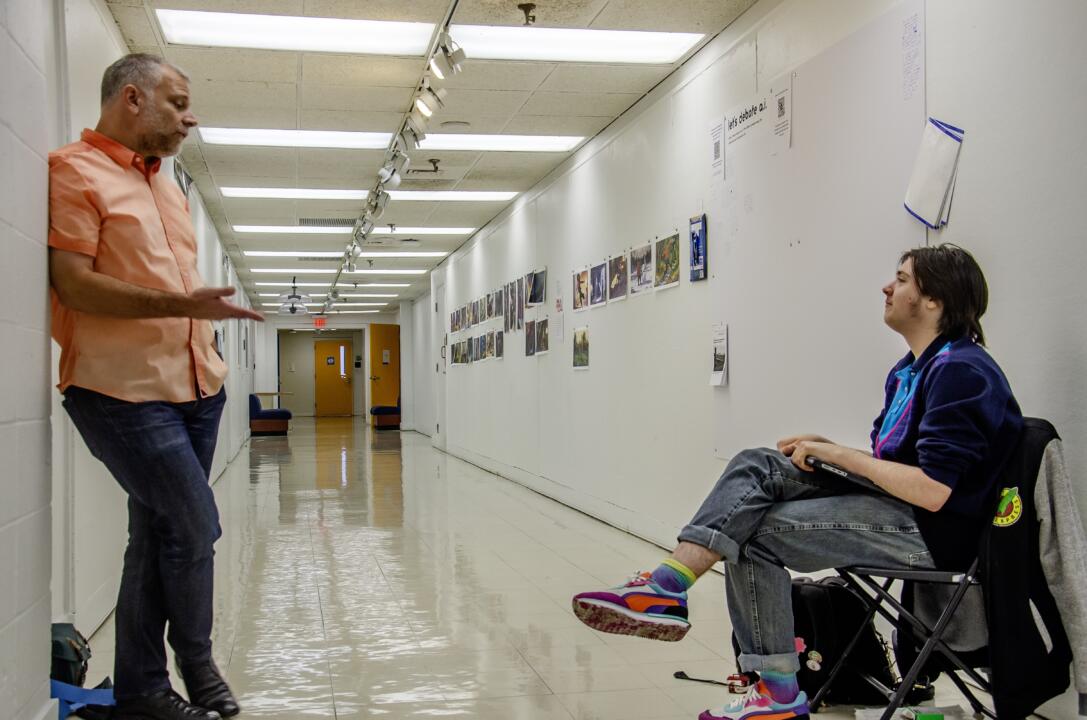The historic district of Old Ellicott City is composed of an assortment of rustic buildings, antique shops, dive bars and restaurants which are packed along both sides of a steep Main Street. The road owes its gradient to the valley it was paved through, carved out by the Tiber River which runs parallel to the main road.
Although adding to the bucolic charm of the city, the Tiber and nearby Patapsco River are an omnipresent threat to the viability of businesses and people residing in the area. The creek’s water runs so slow that you could hardly tell it was moving at all, unless perhaps you witnessed a twig drifting on the shallow surface. It would not travel far before washing up on a rocky bank, indicating the water level is where it ordinarily would be: low.
But July 30, 2016, was not an ordinary day. Six inches of rain fell from the sky in two hours, raising the water level above 25 feet. Water rose up and over the banks of the neighboring rivers and coursed down Main Street with a frenetic purpose, swallowing everything in its path – cars, trash cans, people – and gushing into the unprepared stores via newly busted windows and unsealed front doors.
Seven months later, the extent of the damage is apparent. The shops sitting atop the valley have seemingly bounced back and found their stride again. They have the laws of gravity to thank for the comparatively less damage they experienced.
Further down Main Street, the situation is bleak. On July 30, just before the flood occurred, diners at Portalli’s restaurant were sipping red and white wine out of long stem crystal glasses and feasting on Italian delicacies. Seven months later, the windows on both sides of the entrance are boarded up by large sheets of pressed wood chips which display a partially ripped 8.5 x 11 sheet of white paper reading, “Coming Soon! Portalli’s.”
The Southwest Connection, a Native American jewelry and gift store, has windows showcasing a dark, empty space with a single mud-splotched blue wheelbarrow placed in the center. Many more shops along the bottom of Main Street are simply gutted inside.
But not Maxine’s Antiques and Collectables.
The store sits beneath a level of apartments whose red brick exterior clash with the cyan paint covering the shell of Maxine’s. A thin but tall pink metal flamingo guards the entrance, with turquoise and purple flags on each side of the door. The showcase windows, historically displaying shelves of items, now merely provide insight into what the store itself looks like: sporadic racks of clothes and wooden cabinets hosting jewelry and fine china.
Upon entering, one is greeted by a small dog on a leash sitting in front of a cluttered U-shaped showcase desk. Behind the desk stands an older woman in a remarkable outfit: a light pink blazer, magenta pants and neon pink Western-style boots. Charlene Townsend is the owner and she has been running the shop for 34 years since she took over for her mother, Maxine.
The shop was celebrating its 50th anniversary one month before the flood.
“I lost everything,” she said. “It’s very hard to put into words because it was so horrific… it only took two hours to wipe out an entire town.”
Townsend left the shop just after 6 p.m. on July 30. She was having dinner when one of her friends called to let her know something was happening in Old Ellicott City. She didn’t seem to think much of it at the time, as this sort of thing had happened to her before.
“I’ve been there for the floods [before] because my mom was there for Agnes, I can remember being a child and seeing the water come up [the other] way, and the fires, we’ve had quite a few fires.”
Her friend was adamant, though, that she needed to get to her store as soon as possible. “I got there around 8:30 p.m. There’s a way – you can come down the back way – and we snuck down the back way and down the steps here and I turned the corner and everything was pretty much a disaster.”
As she gazed at her store as it currently looks after reparation, she reminisced, “My store was packed… I had one of those antique stores that people liked to treasure the hunt [in].”
Townsend was aided by numerous volunteers – some whom she had never met before – in recovery efforts. They waded into two feet of thick mud which covered the floor, trying to salvage as much as possible.
“If we saw something shiny, we would throw it in a bowl. We retrieved a lot of jewelry, but I lost a lot. I mean I lost at least 95 percent of what I had – Did you need any help honey?” she said to a woman who passed by the counter.
“No thank you,” came the reply.
Townsend fiddled with a necklace on the glass counter-top as she said, “It was amazing how the state and whoever else started to donate money to the cause. Without that money, I wouldn’t be here. I just opened two weeks ago.”
The United States Army Corp of Engineers are doing a study on potential water mitigation techniques which could lessen the probability of such as disaster from reoccurring, but a sure-fire plan is nearly impossible given the town’s geographic placement.
“I’ve decided that this is it. If it happens again, I am out,” she said, placing emphasis on each of the last three words. “I own the building [but] I’m out. This is a one-time shot for me.”


